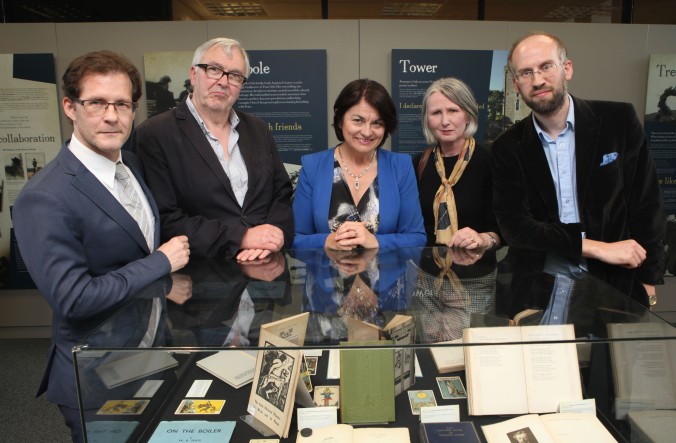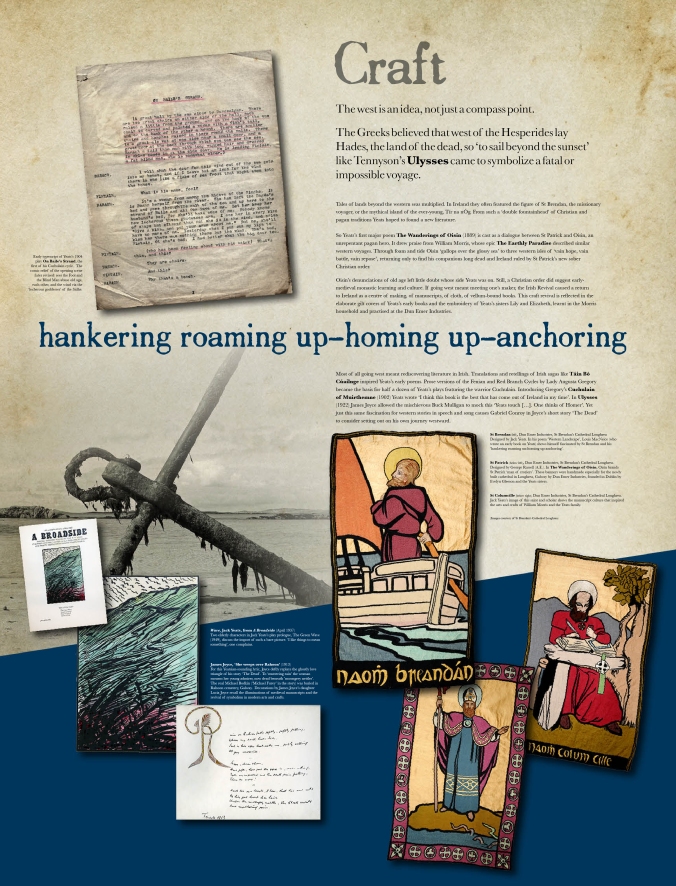The last year represents one of our most successful years ever here at Yeats’s Tower. The opening of the Studio at Thoor Ballylee represented 2019’s biggest achievement, and one that will keep giving for many years to come. With generous support, we completed in double-quick time the conversion of the Yeats family’s old garage into a new vibrant space for workshops, events, education, art, and community, further enriching this place full of poetry and creativity.
By October 2019, when the curtain came down on our fifth season open at Thoor Ballylee, an estimated 4, 580 visitors had come and experienced the magic of Yeats’s tower. With your help we hope 2020 can be even better! Your continuing support is much appreciated.
The season at Thoor Ballylee opened on Easter Saturday in late April, with spring springing and with tea and Easter Bunny cake kindly provided by our generous and longest serving volunteer, Tonii. This was just the warm up for our regular readings and celebrations for Yeats’s birthday party, held every year (with cake!) on or around 13 June.
Launching the Studio at Thoor Ballylee was our first major event of the season. Guest of honour and speaker of a fine welcoming address was the inimitable Sabina Higgins. Spoken poetry came from poet Mary O Malloy, and was followed by a fluid rendition of ‘The Salley Gardens’ by soprano, Helen Hancock. Doing the honours of the official opening in cutting the ribbon was our very own esteemed author and educator Sr Mary de Lourdes Fahy.
The exhibition, assembled from materials from our own and NUI Galway’s archives, featured women artists like Elizabeth Rivers and especially the work of Elizabeth and Lily Yeats, in arts and crafts, printing and embroidery, after whom the studio is dedicated. Pride of place went to exquisite embroidered banners designed and made by the Yeats family and female workforce at Dun Emer workshop, rarely seen outside their home St Brendan’s Cathedral Loughrea, woven under the direction of Lily Yeats and featuring saints designed by Jack B. Yeats and his wife Mary Cottenham Yeats. Presiding over the studio space and presenting an expert weaving demonstration was Kathy Mooney. Later in the year the Studio at Thoor Ballylee was the venue for a day of spinning and weaving, now becoming a very popular annual event.
So already the Studio at Thoor Ballylee has been put to good use. Local artist, Cindy Lund, came to reside in there for a week, creating some amazing original work, attracting other artists, giving local children an opportunity to draw in Yeats’s garage, while generating great interest in Thoor.
The studio was also the venue for weekly evening classes with Jackie Quelly, a lecture on Maud Gonne’s Men, by Anthony J. Jordan, an embroidery workshop with Sandra from Sacra King Irish Fibre Crafters and an exhibition and various artistic activities by the wonderful Kinvara Sanctuary group. Later as part of the Yeats Lady Gregory Autumn gathering Marina Carr came to give an expert playwrighting workshop here.
We are indeed indebted to Denis Creaven, from the Institute of Education, who has faithfully, year after year, given his two day mid-term lectures to Leaving Cert students, free gratis, with all proceeds going to Thoor Ballylee.
The mill by the river, on a sunny summer’s day in June, was the setting for a joint recital by Coole Music and an incredible youth orchestra from Norway, conducted by Katherina Baker. Two weeks later we were treated to an afternoon of medieval music by the junior members of Coole Music, fittingly attired in medieval costumes, performing in our medieval tower house.
To mark Heritage week, field archaeologist Dr Christy Cunniffe gave a talk and presentation on vernacular houses. Anna O Donnell gave an fascinating demonstration on the story of butter and butter making while soprano Helen Hancock delighted us with an evening of opera and the story of song. On Culture Night two rare performances occurred at Thoor of Yeats’s and Augusta Gregory’s The Pot of Broth by a pioneering local theatre group. This was followed by Anna O Donnell‘s own broth tasting, and with Lelia Doolan’s insights into the family life of the Yeatses, audiences went away fully satisfied.
In September we were, once again, honoured to host The Lady Gregory and Yeats Autumn Gathering, and the studio and tower was the host for important sessions on women’s writing and creativity. As noted, internationally renowned playwright Marina Carr with Head of Drama at Trinity College, Dublin, Melissa Sihra, conducted a workshop for playwrights in the studio. Film producer Lelia Doolan gave an enlightening lecture on the actress and artistic director Ria Mooney and the Abbey Theatre, while the local Wild Swan Theatre group brought the weekend to a close with their premiere production of a new play, Lady Gregory’s Ingredients.
World renowned storyteller, Martin Shaw (Cista Mystica) chose Thoor Ballylee as the Irish venue for his sold-out story telling workshop and evening performance. This event attracted participants from as far afield as Germany and New Zealand, and proved a most successful event in terms of enjoyment and publicity. A film made by Grant Thompson around the event with Martin Shaw at Thoor Ballylee discussing Yeats was featured on social media and widely viewed.
Thoor Ballylee ended the year as it began as a hub for the arts and for community: the many musical events in the series included expert local group The Burren Bandits while Máirtín O Connor, Garry O Brien and singer Mary McPartlan brought another busy season to a close.
Thoor Ballylee would like to give thanks for the generosity of our amazing 2019 volunteers: Rosemary, Rose, Tonii, Karen, Liam, Gus, Pat O Looney, Pat Farrell.For their never-ending help, our Tús members: Khrystof , Dominic, Joe, and Frank (CE scheme). To JJ and family members for manning the car park, controlling the traffic, lighting our way in the dark and helping where needed. And to our never-failing staff Eoghan MacDonagh and the dedicated Nichola.
All this hard work, dedication, and passion for W.B. Yeats, for Thoor Ballylee, and for the arts and Galway culture, was fittingly rewarded in when we were awarded the prestigious Cathaoirleach’s (Mayor’s) Award for Arts and Culture 2019.

Marion Cox, Rena McAllen, Colm Farrell, Anna O Donnell, Lelia Doolan of the Yeats Thoor Ballylee Society
All this, and we couldn’t have done it all without you! Despite our recent success in winning a competitive Government of Ireland grant to help open the studio, we rely entirely on volunteers and private donations to keep going, and making sure Yeats’s legacy is preserved and open for worldwide visitors and new generations. Please come and visit us in the new season, and if you can become a friend or donate to our fund!













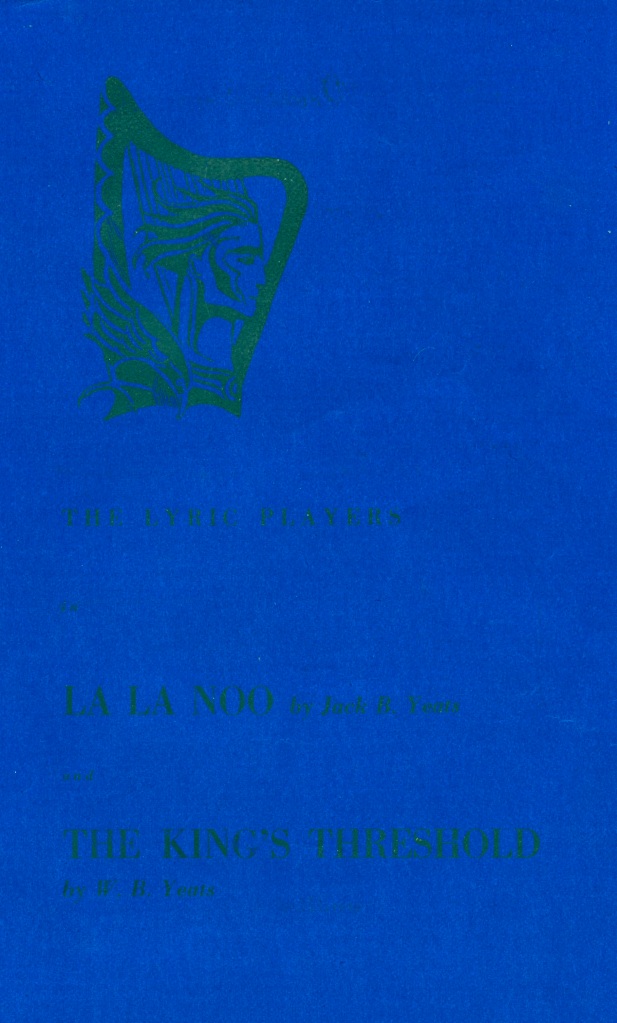
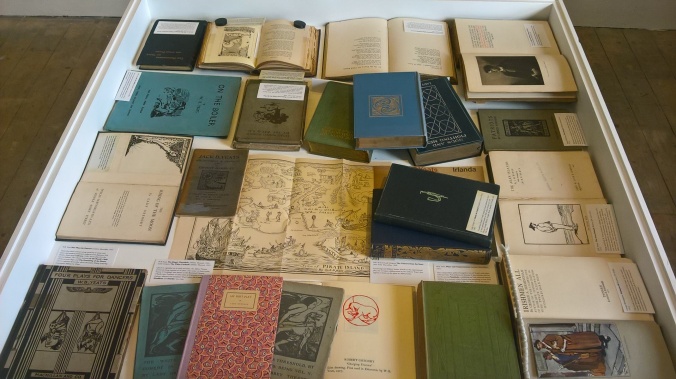
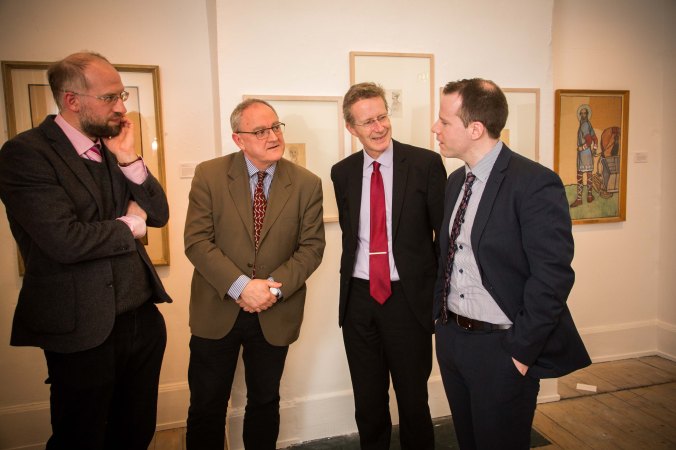




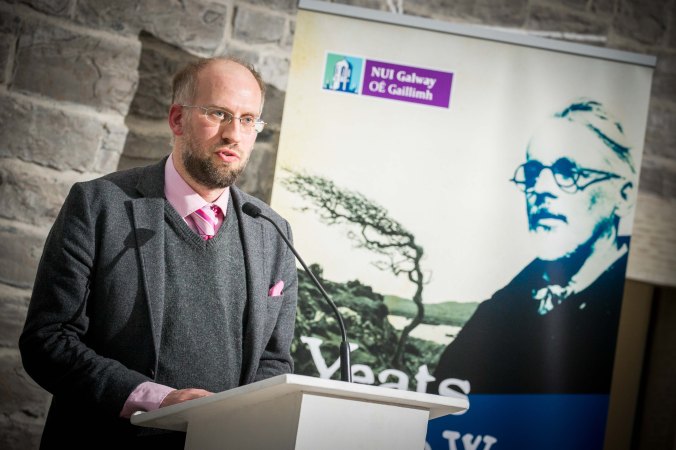


![yeats-and-the-west-logo[1]](https://thoorballylee.files.wordpress.com/2015/11/yeats-and-the-west-logo1.png?w=676)

